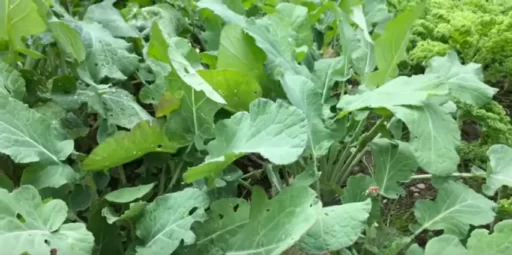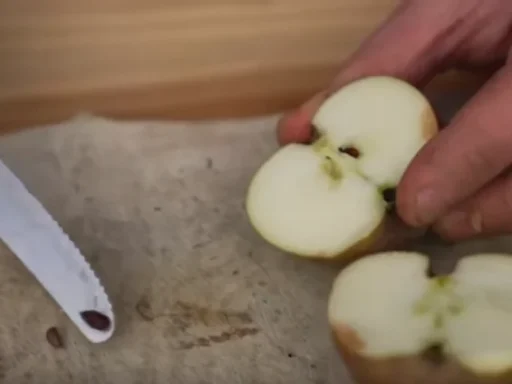Are you tired of the seasonal struggle to maintain a steady supply of fresh vegetables? Do you want to reduce your gardening workload while still enjoying delicious, nutritious produce? If so, perennial vegetables might be your best solution! These remarkable plants offer superb culinary qualities and can add aesthetic value to your garden. This article will explore various perennial vegetables that can thrive in your garden, filling that frustrating “hungry gap” between winter harvests and newly planted crops.
Why Grow Perennial Vegetables?
Perennial vegetables are unique in that they return year after year, requiring less effort compared to traditional annual crops. They are ideal for gardeners who want to enjoy fresh produce with minimal maintenance. The beauty of these plants lies in their ability to provide nutritious vegetables while enhancing the landscape of your garden. Additionally, many perennial vegetables are hardy, capable of withstanding diverse weather conditions, which makes them an excellent choice for sustainable gardening.
Starting with Globe Artichoke
One of the most visually striking perennial vegetables is the globe artichoke. With its architectural foliage and impressive stature, this plant can be a showstopper in any garden. While you can start globe artichokes from seeds, it’s often better to begin with young plants to give yourself a head start.
Planting Tips
- Location: Choose a sunny spot with well-drained soil.
- Spacing: Plant the globe artichokes approximately 3 feet (1 meter) apart to allow ample space for growth.
- Aftercare: Regularly weed and water, especially during the first year of establishment. In cold regions, consider covering the crowns with straw or compost in autumn for added protection.
When harvested at golf ball size, the tightly closed flower buds are delicious when steamed or boiled. The individual scales can be dipped in sauce, revealing the tender heart of the artichoke, which is truly the centerpiece of the dish. Allowing some buds to flower will attract bees, adding to the biodiversity in your garden.
Cardoon: A Versatile Alternative
Similar in growth and conditions to the globe artichoke, cardoon is another great option for gardeners. Instead of harvesting flower buds, you can enjoy the edible stems, which resemble celery. These can be used in various dishes, including soups and gratins, making them a versatile addition to your perennial garden.
Rhubarb: The Bold Statement Maker
For those in colder, damper regions, rhubarb is an excellent perennial vegetable. Its vibrant stalks provide a unique aesthetic while being a reliable source of fresh produce. Rhubarb thrives in well-drained soil and can produce large quantities of stalks each year with minimal maintenance.
Introducing Babington’s Leek
Babington’s leek is a type of perennial leek known for its garlicky flavor. This unique vegetable can be started in pots with an all-purpose potting mix. Plant them about an inch deep and allow them to grow before transferring them outdoors in spring.
Planting Strategy
- Spacing: Once established, plant them approximately 6 inches (15 centimeters) apart.
- Maintenance: Leave them alone during the first year to encourage bulking up. Starting in the second spring, you can harvest the stems while allowing the bulb beneath to continue growing.
Babington’s leek will produce flower stalks that contain tiny bulbils, which can drop to the ground and create new plants, expanding your garden’s yield year after year.
Perennial Kale: A Year-Round Green

Another fantastic addition to your perennial garden is perennial kale. This hardy vegetable can grow to impressive heights while being easy to manage with regular harvesting. With its resilience against pests, perennial kale can provide fresh greens throughout the year.
Growing Tips
- Starting Cuttings: Introduce perennial kale through cuttings taken from side shoots, preferably around 10 inches (25 centimeters) long.
- Growing Conditions: Plant these cuttings in an all-purpose potting mix, keeping the soil moist to encourage root development. Once established, they can thrive outdoors.
Other perennial kale varieties to consider include Daubenton’s kale and Ethiopian kale, both offering unique flavors and adaptability.
Oca: A Unique Root Crop
Oca, or New Zealand yam, is a lesser-known perennial vegetable that is easy to grow and low in pests. It can be used in various dishes, from salads to baked goods, offering a tangy lemon flavor.
Planting and Harvesting
- Planting: Start oca in pots before transferring them outdoors after the last frost, spacing them about 3 feet (90 centimeters) apart.
- Harvesting: Tubers develop in autumn, typically after the foliage dies back. Store harvested oca similarly to potatoes.
Jerusalem Artichoke: The Sunflower Family
Jerusalem artichokes, or sunchokes, are another excellent perennial tuber. They produce large, sunflower-like plants that not only yield edible tubers but also beautify your garden.
Growing Insights
- Planting: In spring, plant the tubers about 3 inches (7 centimeters) deep and 1 foot (30 centimeters) apart.
- Usage: Once harvested in autumn, you can cook them just like potatoes.
Asparagus: The Crown Jewel
Asparagus is often regarded as the king of vegetables due to its exceptional flavor and culinary versatility. Although it requires patience to establish, the rewards are immense.
Growing Asparagus
- Soil Preparation: Dedicate a specific area for asparagus. Prepare the soil with well-rotted manure or compost.
- Planting Method: Create a trench and space the crowns about 18 inches (45 centimeters) apart. Backfill and water well.
- Harvesting: Resist harvesting for the first two years. After that, enjoy spears for 6 to 8 weeks each spring, allowing the foliage to grow and recharge the roots.
Other Notable Perennial Vegetables
Don’t hesitate to explore other perennial vegetables like hostas for their young leaves or daylily flower buds. Each offers unique flavors and culinary possibilities. Always research before trying new plants to ensure safety and suitability for your garden.
Conclusion
Growing perennial vegetables is a rewarding way to enjoy fresh produce with minimal effort. These plants not only enhance your garden’s beauty but also contribute to a sustainable food source. Whether you choose globe artichokes, perennial kale, or asparagus, each vegetable brings unique flavors and benefits to your plate.
Frequently Asked Questions (FAQs)
- What are perennial vegetables? Perennial vegetables are plants that grow back year after year without needing to be replanted. They typically require less maintenance than annual vegetables.
- How do I start growing perennial vegetables? Begin by selecting suitable varieties for your climate, preparing the soil, and following specific planting and care instructions for each type of vegetable.
- Can I grow perennial vegetables in containers? Yes, many perennial vegetables can be grown in containers as long as you provide adequate space, soil, and drainage.
- How long does it take for perennial vegetables to produce harvestable yields? The time it takes varies by species. Some, like rhubarb and asparagus, may take a couple of years to establish before significant yields can be harvested.
- Are perennial vegetables resistant to pests? While they can be more resilient than annual crops, perennial vegetables are still susceptible to pests and diseases. Regular monitoring and maintenance can help mitigate issues.
- Can I grow perennial vegetables in shaded areas? Most perennial vegetables thrive in full sun; however, some varieties, like certain types of kale, can tolerate partial shade.
- What are some popular perennial vegetables for home gardens? Popular options include globe artichokes, perennial kale, asparagus, Jerusalem artichokes, and oca.






